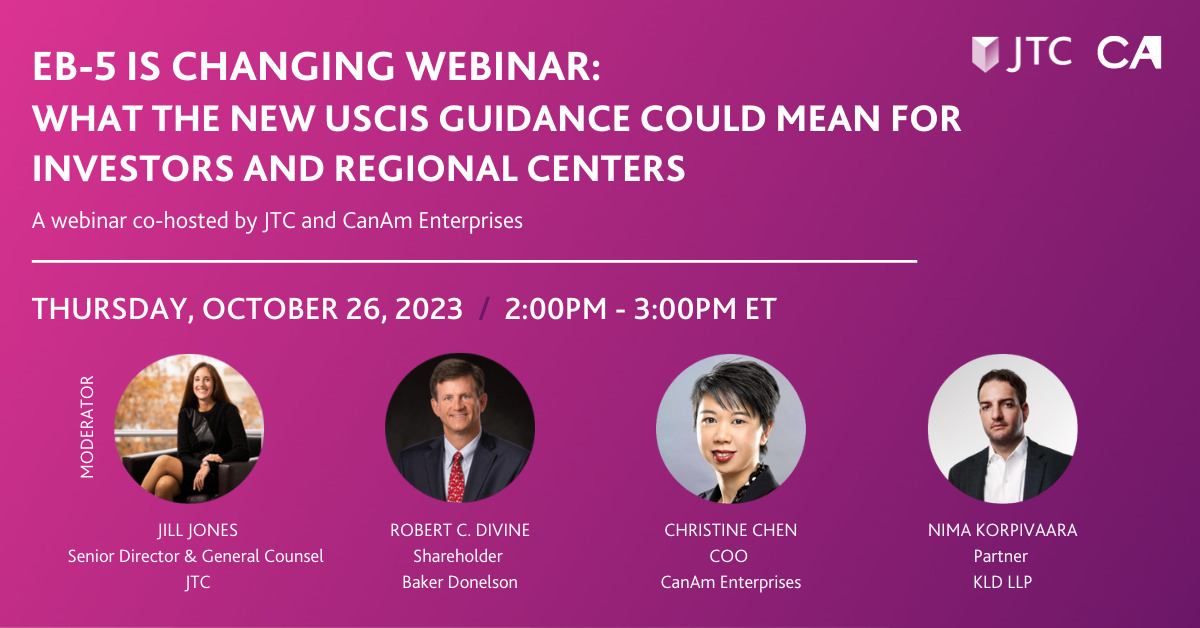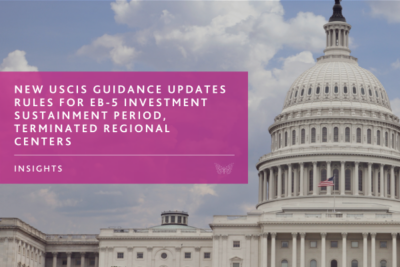For many international students, studying in the United States represents more than a degree—it’s a stepping stone to a future built on opportunity, mobility, and long-term security. But today’s immigration environment is growing increasingly complex, with delays in student visa processing, tightening work visa pathways, and persistent uncertainty around employment sponsorship.
In response to these challenges, CanAm Enterprises recently hosted a private information session tailored to international students seeking clarity and control over their U.S. immigration plans. Held in New York City and featuring a presentation by leading immigration attorney Rohit Turkhud of KSG Law, the event was designed to offer more than just information—it aimed to provide students and their families with practical strategies for securing their future in America.
At the heart of the discussion was the EB-5 Immigrant Investor Program—a powerful but often overlooked pathway that allows eligible individuals to invest in the U.S. economy and obtain permanent residency.
The Pressure Facing International Students
Students coming to the U.S. on F-1 visas are already facing considerable headwinds. Visa appointment backlogs, abrupt pauses in interview scheduling, and political volatility in home countries can delay or derail carefully laid academic plans. And even for those who make it to campus, the challenges don’t end there.
“Employers are increasingly reluctant to sponsor international students for jobs after graduation,” said Rohit Turkhud, who has worked with EB-5 clients for more than a decade. “That question—‘Do you require sponsorship?’—can close doors no matter how qualified you are.”
Students on F-1 visas often pursue Optional Practical Training (OPT), which grants them one to three years of temporary work authorization, depending on whether their degree is STEM-designated. But converting OPT into a longer-term employment visa such as the H-1B involves navigating a restrictive lottery system, where success is far from guaranteed.
For families investing heavily in an American education, this lack of certainty can be deeply unsettling.
A More Predictable Path: EB-5
The EB-5 visa program offers a very different proposition. Through an investment of $800,000 into a qualifying project that creates at least 10 full-time U.S. jobs, applicants and their immediate family members (spouse and children under 21) can obtain U.S. green cards and eventually apply for citizenship.
Unlike the H-1B, the EB-5 is not employer-dependent. It’s a self-sponsored, direct route to permanent residency—making it an increasingly attractive option for families who want to take control of their long-term immigration plans.
Read more about F-1 and EB-5 comparison
“EB-5 gives you the power to plan ahead,” said Hiloni Desai of CanAm. “It’s not tied to the whims of an employer or a random lottery. It’s a strategic investment in your future.”
Desai emphasized that EB-5 is not just for ultra-high-net-worth individuals: “This is not a donation. It’s an investment, and with the right project, it’s one that families can expect to see returned in four to six years. It’s a long-term decision, but a highly practical one.”
How EB-5 Can Work for Students
One of the key messages from the session was that students don’t have to wait to explore EB-5. The process can begin before arriving in the U.S. on a student visa—or while already studying in the country.
Turkhud explained, “I’ve worked with families who start the EB-5 process when their child is just 12 years old, knowing it will take a few years. By the time that child is ready for college, they’re entering the U.S. as a green card holder—not an international student dependent on work visa approvals.”
Starting early is not only strategic—it can also secure protection under current immigration laws. While the EB-5 program is authorized through September 2027, applications filed before September 30, 2026, are “grandfathered in” under the current regulations. For students planning to arrive in the U.S. over the next year or two, now is the window to evaluate this path.
Turkhud added, “You want to be able to say with confidence to an employer: ‘I don’t need sponsorship.’ EB-5 gives you that advantage. And it puts you on an equal playing field with American citizens when you enter the job market.”
A Track Record That Inspires Confidence
For families considering such a significant investment, the partner they choose matters deeply. CanAm, one of the oldest and most established regional center operators in the EB-5 space, has earned its reputation through a track record of consistency, compliance, and capital return.
“We’ve structured more than 75 EB-5 projects and helped over 7,000 investors secure green cards,” Desai noted. “To date, we’ve returned over $2.5 billion in capital to our investors. That’s what families want to know—that their investment is not only creating opportunity but also being protected.”
Turkhud, who has worked with hundreds of CanAm investors over the years, echoed this sentiment: “They are one of the best regional centers in the business. When I have clients ask who they can trust, CanAm is at the top of the list.”
The firm’s approach is deeply conservative, prioritizing job creation and capital preservation over flashier but riskier investment models. As CanAm founder Tom Rosenfeld has said, “We only select projects we’d put our own families into.”
CanAm’s current EB-5 Offerings
Legal Guidance for Today’s Environment
Beyond outlining the technical differences between visa types, Turkhud also spoke candidly about the realities students face in today’s immigration environment—from consulate delays to the scrutiny of social media profiles.
“You must be cautious about what you post,” he warned. “Even deleted content can resurface. Political statements, controversial views—they can all affect your visa application. Every freedom comes with responsibility.”
He emphasized that honesty and transparency on application forms are critical: “If there’s a mistake—even an accidental one—it can be used against you. The stakes are high, and the system is unforgiving.”
These cautionary notes reinforced the larger message: navigating U.S. immigration requires not just resources, but foresight and diligence.
A Conversation That Mattered
“I’ve seen most of the immigration alphabet soup,” Turkhud quipped at one point, referring to the maze of visa categories. “But EB-5 is one of the most vibrant programs available today—especially for Indian students.”
The discussion included questions about future academic plans, dual-degree programs, and practical advice for maximizing opportunity in the U.S. market. Students spoke candidly about their aspirations, and CanAm’s team responded with both strategic insight and personal encouragement.
“Education in the U.S. is unmatched,” Turkhud concluded. “And with the right plan, it can be the foundation for a secure, successful life here.”
Final Takeaway: Plan Now, Decide Later
Perhaps the most important message of the day was that families don’t need to make a final decision today—but they do need to start planning.
Whether students are entering high school, applying to universities, or already pursuing graduate degrees, understanding all available immigration options—including EB-5—is essential to making informed choices.
“EB-5 isn’t the only path,” Desai acknowledged, “but it’s one of the clearest and most stable. And in an environment full of uncertainty, that’s worth exploring.”
Want to learn more about how EB-5 could fit into your family’s long-term plan?
Visit www.canamenterprises.com for upcoming events, webinars, and resources for international students and parents.




